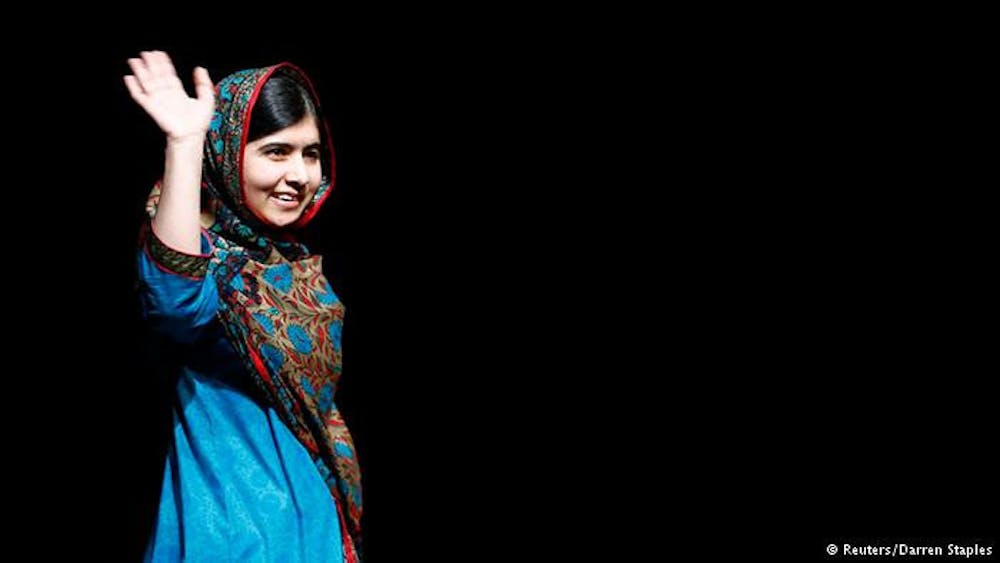A number of Nobel Prize recipients were announced this week, and, while not a field for an award, the value of education was in the highlighted because of one of the recipient’s stories. Malala Yousafzai, the youngest recipient ever, captured the
admiration of the world when she stood up for education even after being shot by the Taliban two years ago. At the age of 17, she won one of two Nobel Peace Prizes. Kailash Satyarthi won the other for his work to end child exploitation.
Here is some background about these the creator of prestigious prizes, and information about the accomplished individuals who were recognized this year.
Alfred Nobel (1833-1896) was a successful chemist, engineer, and inventor in the 19th century. Over the course of his life, he obtained 350 different patents for his inventions—the most notable of which is dynamite. As can be imagined, he acquired a large fortune. When he died in 1896, he left behind a will that dedicated the greater part of his estate to prizes that were to be given to those who have made great strides in the fields of science, literature, and humanitarian work. These awards are known as the Nobel Prizes, and the 2014 winners were announced this week. The categories were Physiology or Medicine, Physics, Chemistry, Literature, Peace, and Economic Sciences. One of the recipients of the Peace Prize
Physiology or Medicine: This prize went to John O’Keefe (United States), Mary-Britt Moser (Norway), and Edvard I. Moser (Norway), for their discovery of the “inner GPS” of our brains. Their discovery of “place” cells—cells which allow our brain to form a map of our surroundings—and “grid” cells—cells which generate a coordinate system—explained how we are able to navigate our way through our environment. These discoveries have introduced new ways to look at the brain’s cognitive functions, and a deeper understanding about the cells that make these functions possible. This could lead to developments in treating diseases that involve memory loss, such as Alzheimer’s.
Physics: This prize went to Isamu Akasaki (Japan), Hiroshi Amano (Japan), and Shuji Nakamura (United States) for their invention of the energy saving blue light-emitting diode (LED). Akasaka, Amano, and Nakamura’s discovery of blue diodes in the 1990’s allowed them to create energy saving lightbulbs that emitted white light, as opposed to red or green. This made energy saving lightbulbs more popular and household-friendly, thus increasing the number of people who choose this environmentally friendly technology.
Chemistry: This prize went to Eric Betzig (United States), Stefan W. Hell (Romania), and William E. Moerner (United States) for their acheivements in nanoscopy—the visualization of the pathways of molecules inside cells. These scientists have made discoveries that have increased the physical limit of microscopes, making the optical microscope able to examine the nanoworld. Stefan W. Hell used two laser beams—one causes fluorescent molecules to glow, and the other cancels out all fluorescence that is not in a nanometric volume. This method is called Stimulated Emission Depletion Microscopy. Eric Betzhig and William E. Moerner used a different method called Single-Molecule Microscopy, in which the fluorescence of molecules can be turned on and off. The achievements of these scientists will allow for the more precise study of diseases such as Alzheimer’s, Huntington’s, and Parkinson’s.
Literature: This prize went to French author Patrick Modiano. He has written numerous novels, which often focus on themes such as memory, identity, and guilt. Modiano often uses history as an influence, with many of his stories taking place during World War II, and the Nazi occupation of Paris.
Peace: This prize went to Kailash Satyarthi (India) and Malala Yousafzai (Pakistan) “for their struggle against the suppression of children and young people and for the right of all children to education.” Satyarthi has lead many peaceful protests against the child labor and the exploitation of children, and has been a contributor to international conventions on the rights of children. Yousafzai has been fighting for girls’ rights to education for many years. She has held fast in the face of violence, continuing her advocacy work even after being shot by a member of the Taliban. She is now a leading spokesperson for education rights, and the youngest person to win a Nobel Prize, at age 17.
Economic Sciences: This prize went to Jean Tirole (France) “for his analysis of market power and regulation.” Tirole’s work focuses on how governments should regulate monopolies. Before Tirole, economists promoted general policy rules across all industries to prevent harmful monopolies, such as the prohibition of cooperation between competitors and price caps. However, Tirole’s work states that each industry is different, and that what works for regulating one industry may not effectively regulate another industry. Tirole has applied these general policies to a number of industries, allowing governments to more effectively regulate harmful business practices, while at the same time encouraging beneficial practices.
By Emma Wesslund, WIUX News Team





